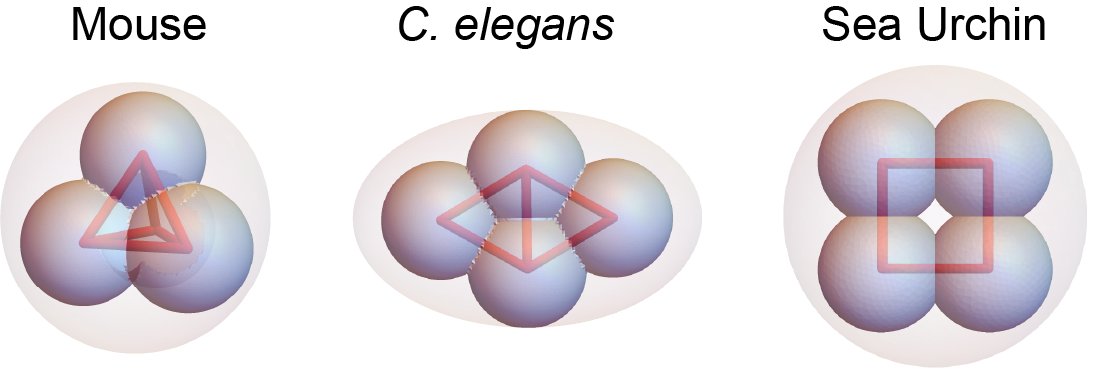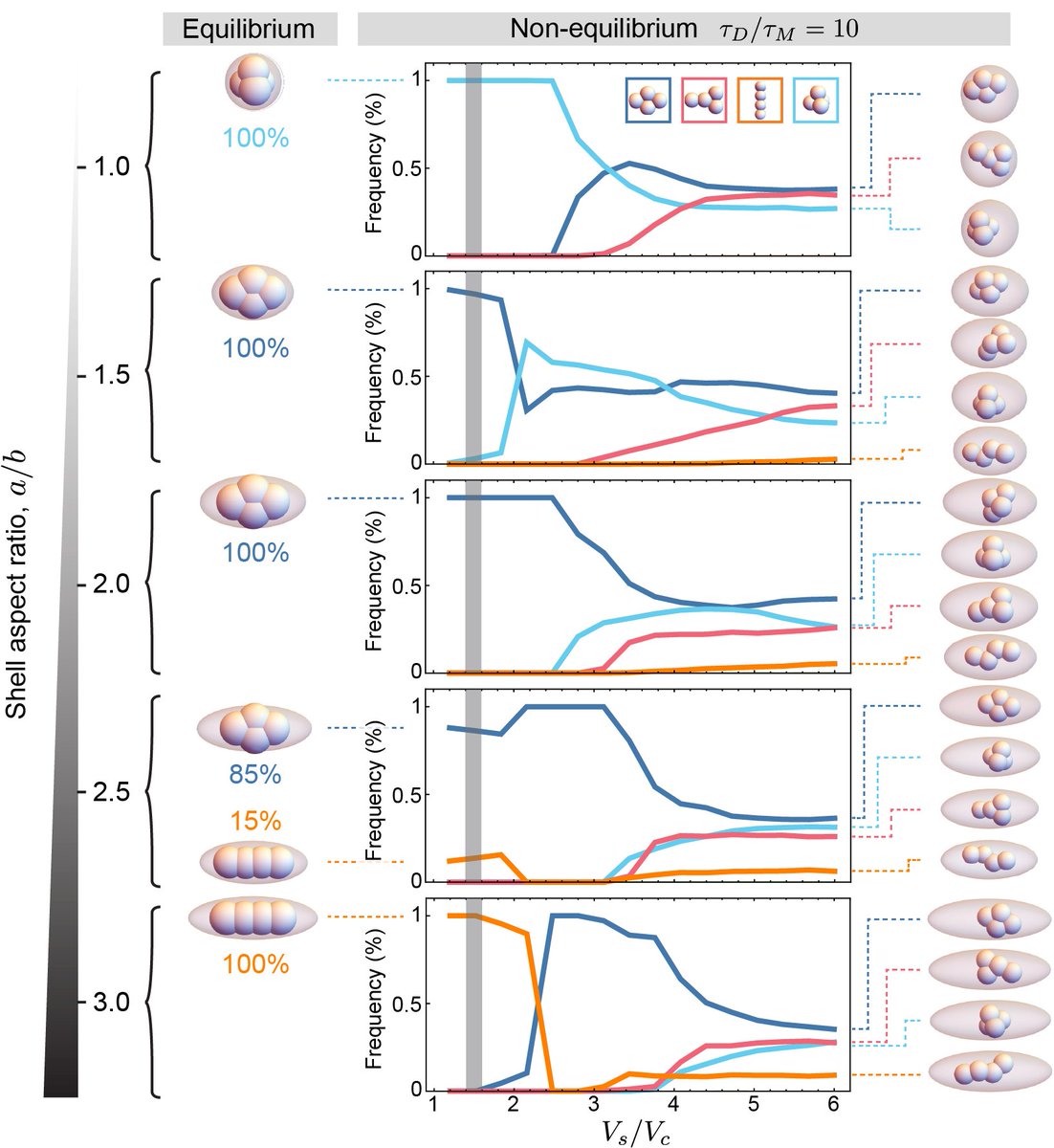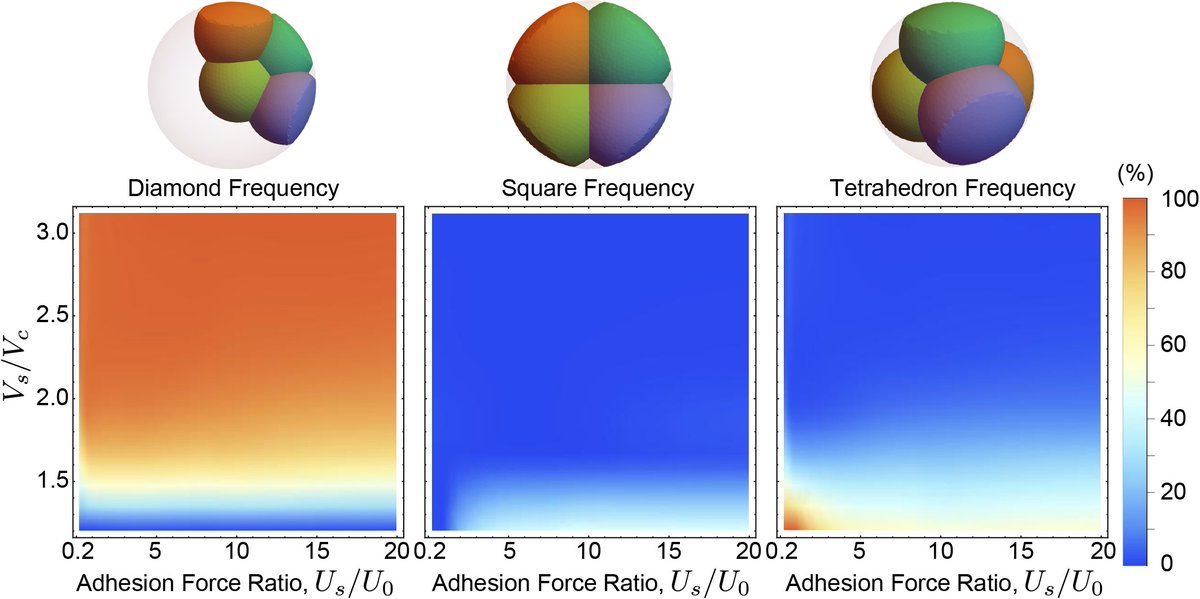Very proud to present the latest work of our great graduate student James Giammona ( @jamesgiammona)! We studied theoretically the “Physical constraints on early blastomere packings”. Here is the short version  https://dx.plos.org/10.1371/journal.pcbi.1007994
https://dx.plos.org/10.1371/journal.pcbi.1007994
 https://dx.plos.org/10.1371/journal.pcbi.1007994
https://dx.plos.org/10.1371/journal.pcbi.1007994
Different species feature different cellular packings as early as the 4-cell stage. Tetrahedron for mammals, diamond for C. elegans, square for sea urchins, etc. How are these packing configurations controlled?
To find out the relative roles of cell-cell adhesion, cell division and embryo confinement, we simulated the dynamics of blastomeres (cells) in the early embryo and varied all the parameters systematically.
If the cells are not confined, math and physics tell us that the equilibrium packing is a tetrahedral configuration. Does this mean that the other observed configurations out of equilibrium? Or are they equilibrium configurations with different constraints?
Simulating embryos with no confinement (no shell or enveloping layer), we found that it takes an extraordinarily long time to reach the tetrahedral equilibrium packings. Too long for embryos to wait...
Moreover, many different packings are observed before reaching equilibrium. Clearly not a robust way to make an embryo.
When a (relatively tight) spherical confining shell is added, only tetrahedral configurations remain and are reached very fast. Confinement removes degeneracy in the packings and speeds up getting to the right one, even overriding division rules.
However, different species have distinct confining shell shapes. Simulating ellipsoidal shells of increasing aspect ratios, as observed in different nematode worms, we found their experimentally observed configurations: tetrahedron, diamond and linear.
In brief, the geometry of the confining shell determines the type of packing configuration, irrespective of division rules. Having a confining shell is a simple way to robustly define blastomere packings.
But... what about the square packings observed in sea urchins? Since blastomeres in sea urchins strongly adhere to the hyaline layer (a shell surrounding the cells), we simulated a spherical sticky shell...
For large adhesion of cells to the confining shell, we found the square packings!  But... they co-exist with tetrahedral packings, and these are not observed in sea urchins
But... they co-exist with tetrahedral packings, and these are not observed in sea urchins 
 But... they co-exist with tetrahedral packings, and these are not observed in sea urchins
But... they co-exist with tetrahedral packings, and these are not observed in sea urchins 
We believe that this is because the hyaline layer changes shape as blastomeres divide, biasing the system towards square packings.
What happens for more cells, as the embryo keeps developing? Not even embryo confinement will prevent degeneracy in configurations for much larger cell numbers, but it will reduce the degeneracy a lot. In this case, division rules play also an important role specifying packings
Finally, I take this opportunity to congratulate James @jamesgiammona for the paper and for his thesis (defended just in time to go into lockdown  )!
)! 

 He was an outstanding graduate student and he is even a better person. Also a great science communicator! Congrats James!
He was an outstanding graduate student and he is even a better person. Also a great science communicator! Congrats James!
 )!
)! 

 He was an outstanding graduate student and he is even a better person. Also a great science communicator! Congrats James!
He was an outstanding graduate student and he is even a better person. Also a great science communicator! Congrats James!
Thanks also to @Sundar_Ram_07 for the preLights piece on this work! https://twitter.com/preLights/status/1281198432376492032

 Read on Twitter
Read on Twitter







